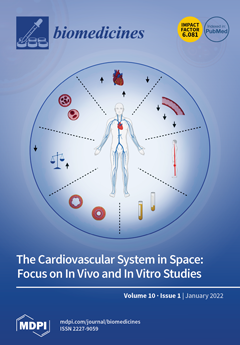Iron homeostasis is regulated by
hepcidin, a hepatic hormone that controls dietary iron absorption and plasma iron concentration.
Hepcidin binds to the only known iron export protein, ferroportin (FPN), which regulates its expression. The major factors that implicate
hepcidin regulation include iron
[...] Read more.
Iron homeostasis is regulated by
hepcidin, a hepatic hormone that controls dietary iron absorption and plasma iron concentration.
Hepcidin binds to the only known iron export protein, ferroportin (FPN), which regulates its expression. The major factors that implicate
hepcidin regulation include iron stores, hypoxia, inflammation, and erythropoiesis. When erythropoietic activity is suppressed,
hepcidin expression is hampered, leading to deficiency, thus causing an iron overload in iron-loading anemia, such as β-thalassemia. Iron overload is the principal cause of mortality and morbidity in β-thalassemia patients with or without blood transfusion dependence. In the case of thalassemia major, the primary cause of iron overload is blood transfusion. In contrast, iron overload is attributed to hepcidin deficiency and hyperabsorption of dietary iron in non-transfusion thalassemia. Beta-thalassemia patients showed marked
hepcidin suppression, anemia, iron overload, and ineffective erythropoiesis (IE). Recent molecular research has prompted the discovery of new diagnostic markers and therapeutic targets for several diseases, including β-thalassemia. In this review, signal transducers and activators of transcription (STAT) and SMAD (structurally similar to the small mothers against decapentaplegic in Drosophila) pathways and their effects on
hepcidin expression have been discussed as a therapeutic target for β-thalassemia patients. Therefore, re-expression of
hepcidin could be a therapeutic target in the management of thalassemia patients. Data from 65 relevant published experimental articles on
hepcidin and β-thalassemia between January 2016 and May 2021 were retrieved by using PubMed and Google Scholar search engines. Published articles in any language other than English, review articles, books, or book chapters were excluded.
Full article






